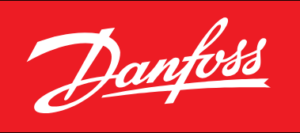Frequently Asked Questions
Technical Aspects
We are able to provide provision plants from 4kW to 700kW and HVAC plant up to 1.200kW (each). Other capacities are subject to study.
We can design and provide systems with air cooled or fresh water (LT water) gas coolers. Sea water cooling can also be applied in specific conditions.
Both can be offered by B COOL. Manly it will depend on the system capacity, piping length and routing to reach evaporators side.
CO2 equipment is smaller than traditional equipment, due high pressure and materials used, it can generate more cooling with a reduced space, smaller compressors and smaller heat exchangers. This is also a good indicator that CO2 plants are good for retrofitting, as it can enter into limited spaces.
Yes, BCOOL installed equipment can communicate via protocol with a new or existing supervision system. We also can remote monitoring the equipment from B COOL headquarter to recommend and foresee better operational conditions and maintenances needed.
With a smaller size than traditional plants, CO2 plant are good for retrofitting but also suitable to new plants.
The system can operate in warm weather conditions. Some limitations may apply. Temperature of condensing water above 38°C is a limitation. For air cooled system, air temperature up to 32°C is a limitation.
B COOL are not tied by any commercial agreement in CO2 systems or any other systems. We work with all major makers such as Carel, Toshiba, Bitzer, BOCK, Johnson Controls and Danfoss.
Standard warranty terms are applicable. With remote monitoring we can support if needed and do necessary operational adjustments.
We have direct expansion and indirect expansion systems working in marine vessels in Denmark. At our headquarter in Risskov, Denmark, you have the opportunity to visit a provision plant prototype working with CO2. See article published here.
B COOL will startup and commission equipment. We will also do an operational training for the crew. B COOL will monitor the equipment during perioded agreed after startup. B COOL service network is being updated to provide technical support in different regions.
Yes, heat recovery can be used to improve whole system efficiency.
Carel is being used with good reliability. Controller can communicate with existing supervision system.
The COOL Booster and COOL Booster+ are both high-performance CO2 cooling solutions, designed to meet different needs and performance levels in marine refrigeration and air conditioning systems. The COOL Booster is a more compact unit, featuring rotary compressors and suited for cooling loads typically ranging from 4 kW to 50 kW, depending on working temperatures. Meanwhile, the COOL Booster+ utilizes reciprocating compressors, capable of handling higher cooling demands, from 50 kW up to 1200 kW per unit, depending on working temperatures. Both models are approved for marine use and built for durability and efficiency in challenging environments.
Sustainability & CO2 as Refrigerant
CO2, employed as a refrigerant, is free of per- and polyfluoroalkyl substances (PFAS), and there is no planned phase-out for this refrigerant. PFAS are a category of chemicals utilized in the production of fluoropolymer coatings and refrigerants, imparting resistance to heat, oil, stains, grease, and water. PFAS may affect reproduction, thyroid function, the immune system, and injure the liver. CO2 has therefore been chosen as a more sustainable and natural solution by leading designers.
CO2 is ultra-low impact refrigerant, and it has a GWP equivalent to 1. The newest European regulations are setting a limit of 1500 for GWP. Which means that CO2 when released to the atmosphere, impact caused is up to 1500 times lower than a “friendly” HFO/HFC.
Yes, CO2 is approved to be applied in maritime applications and it is already being used in compliance with international standards. Non inflammable and nontoxic in low concentrations.
Different countries and regions have different approaches in terms of HFO/HFO phase out. Other variables can interfere on phase out regulation, flag of the vessel, docking port and rising attention to PFAS regulation. Search for “Current F-Gas regulation”, and get information on what is applicable to your ship or fleet.
The lifespan of your current cooling system using HFO/HFC refrigerants is influenced by a combination of regulatory, economic, and environmental factors. Regarding environmental regulations, the use of hydrofluorocarbons (HFCs) and other fluorinated gases (F-gases) in the EU is coming to an end, all F-gases will be banned in these subsectors from 2032 and 2035. CO2 is a no phase-out refrigerant as it has a GWP = 1.
It can be up 20% more efficient when compared to traditional systems, depending on operational conditions. Heat exchangers become very efficient due high density of CO2 and high pressure used.
The CO2 usage as refrigerant has challenges due its high operational pressure, typically in the range of 60 to 120 bar. Even it is not flammable or toxic, it can displace oxygen in confined spaces if there is a leak. Adequate ventilation and gas leak detection are necessary. Proper design, construction, and maintenance are crucial to prevent issues.
CO2 pipes must not pass through living rooms and chambers.
Rules & Classification
The location of the refrigeration system depends on both the refrigerant charge and the volume of the room the unit will be placed.
If the refrigerant charge is under 25 kg the unit can be placed in the engine room or other suitable places without volume restrictions, as long it’s not placed in any accommodation.
For units with more than 25 kg refrigerant charge, the location is subject to study. If a complete loss of refrigerant doesn’t result in oxygen concentration below 19% by volume this is subject to acceptance by the class.
DNV-RU-SHIP Pt.4 Ch.6 – 4.1.3
Yes, it is possible to use CO2 refrigerant units for HVAC systems if a second heat transfer fluid is used.
DNV-RU-SHIP Pt.4 Ch.6 – 4.1.3
CO2 leak alarms must be mounted on the unit itself, as low as possible but with the ventilation flow in mind. If direct expansion is used all refrigerated chambers must be mounted with a leak detector.
The CO2 alarm shall be given when the concentration exceeds 1,500 PPM.
DNV-RU-SHIP Pt.4 Ch.6 – 7.1.1
To understand what is a concentration of 1,500 PPM:
420 PPM – The concentration of CO2 in the air
- 5,000 PPM – OSHA Permissible Exposure Limit (PEL) and ACGIH Threshold Limit Value (TLV) for 8-hour exposure
- 10,000 ppm – Typically no effects, possible drowsiness
- 40,000 PPM – Immediately Dangerous to Life or Health (IDLH)
Source: FSIS Environmental, Safety and Health Group
“The refrigerant piping shall not be located within the crew accommodation spaces, the navigating bridge and the main engine room or such that all accesses to the main engine room will be blocked in case of pipe rupture.”
DNV-RU-SHIP Pt.4 Ch.6 – 4.2.1
The unit is designed according to the current classification. BCOOL can support the class approval.
Finance & Investment
The price of HFO/HFC refrigerant is expected to keep increasing due to availability and restrictions on next years. The price of CO2 is lower compared to HFO/HFC and does not tend to increase, in addition to the fact that CO2 is not a chemical patented product. So is easily accessible, and not only produced by large chemical companies.
Usually, the price of a new CO2 cooling plant is higher compared to a traditional refrigerant plan (30% to 50% higher). While there is an increase in the initial investment, it can be offset by gains in energy efficiency, reduced refrigerant charge, and other benefits related to the technology.
After a preliminary assessment study, B COOL will design, manufacture, test, delivery, and install as a turnkey solution. Project timeline can take from 2 to 4 months depending on complexity and capacity.
Usually 20 years with adequate operational and maintenance procedures.



